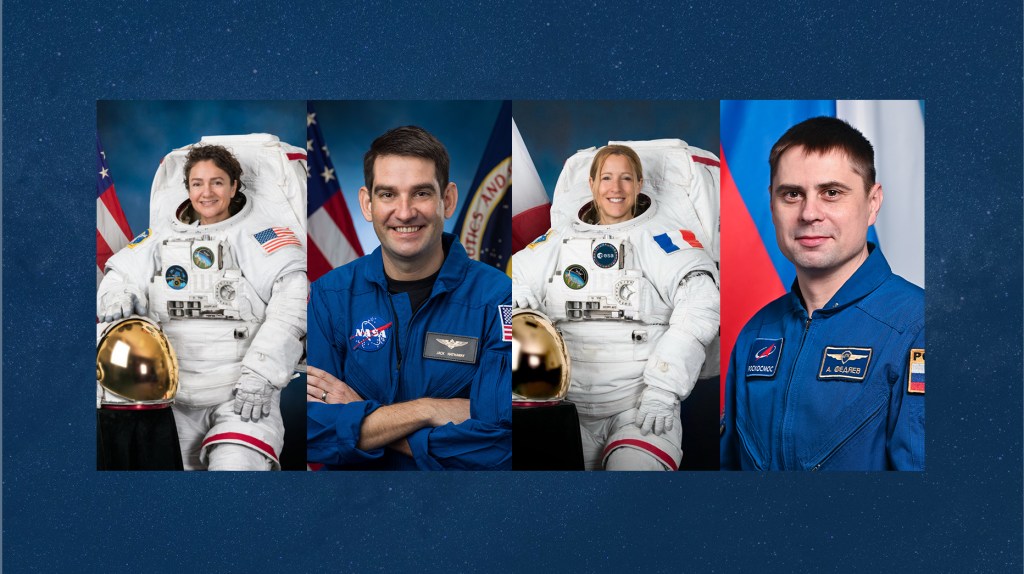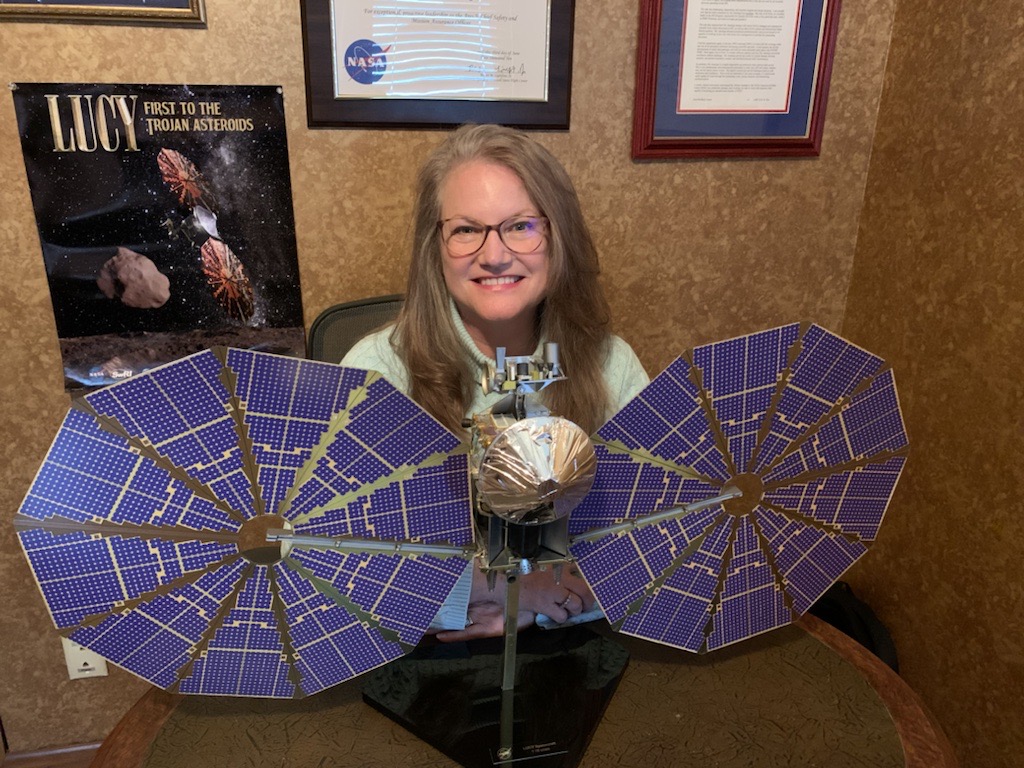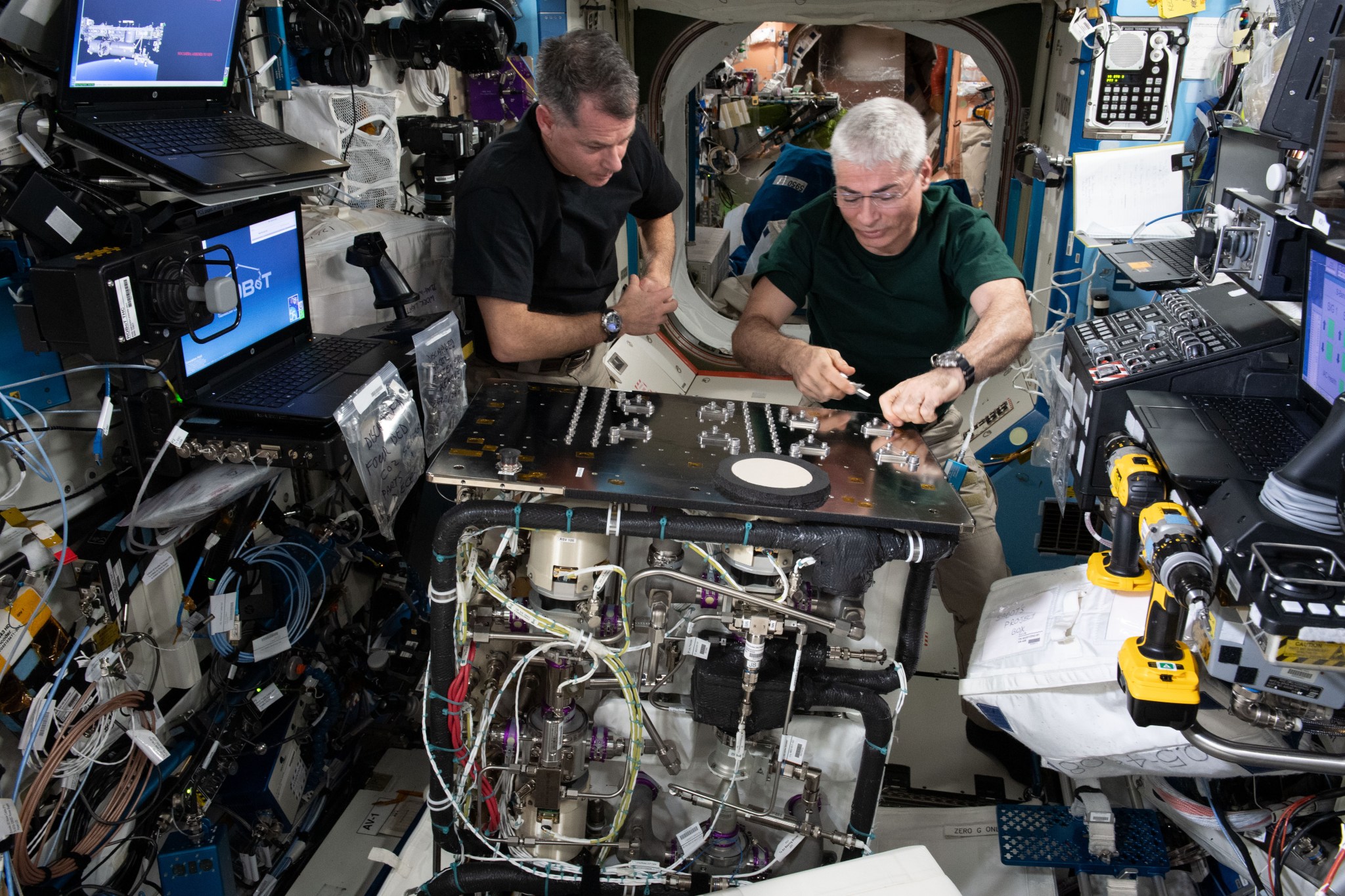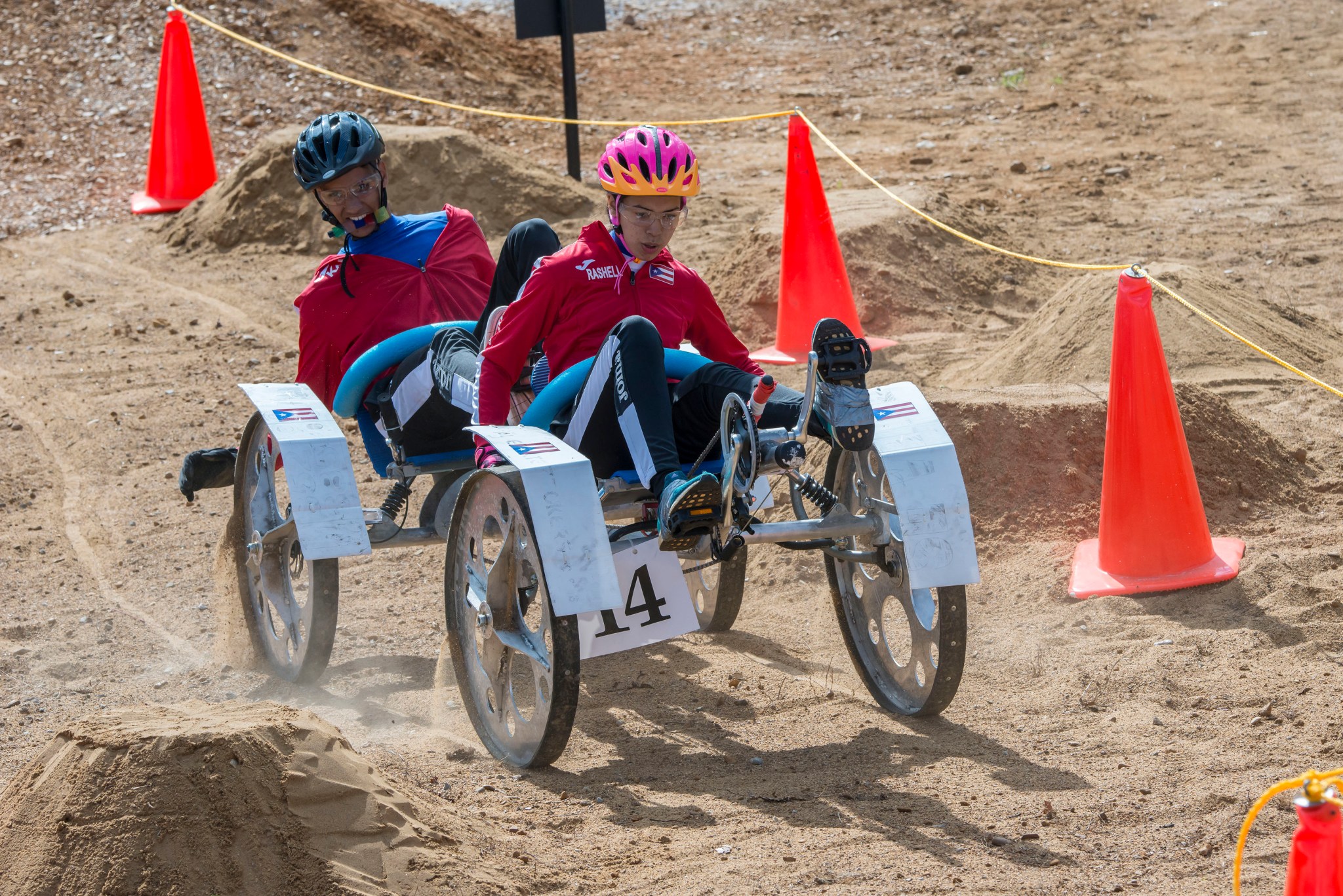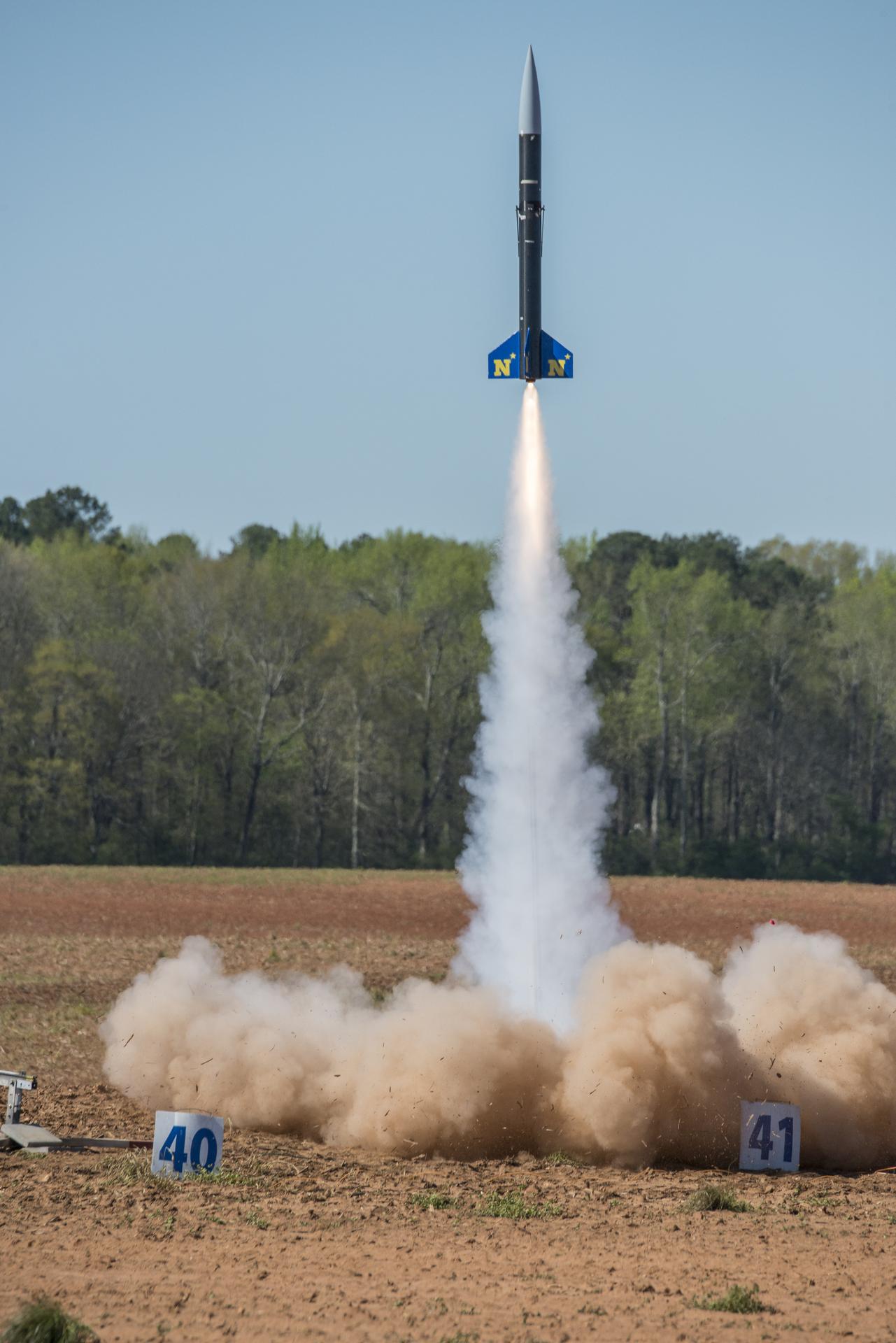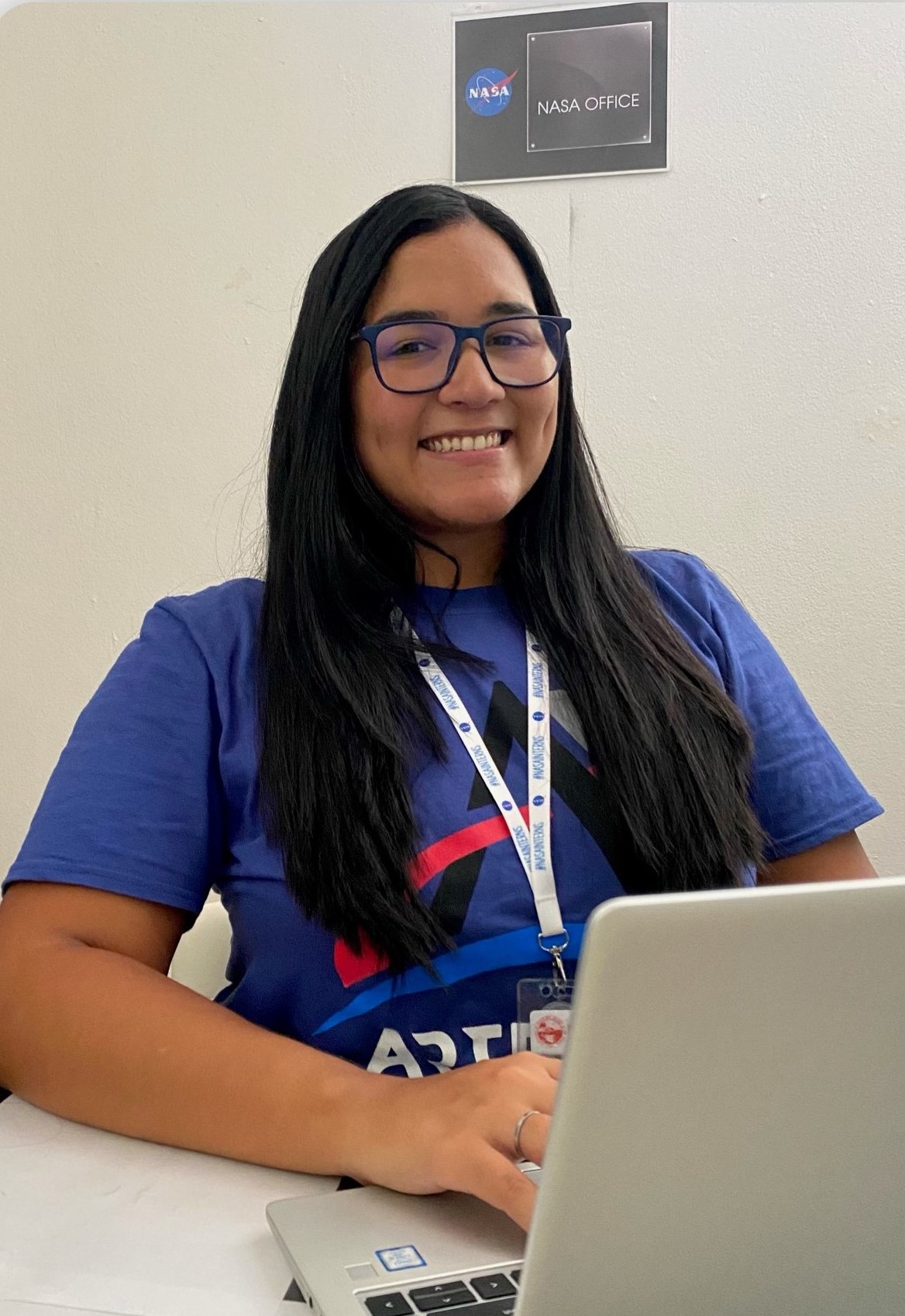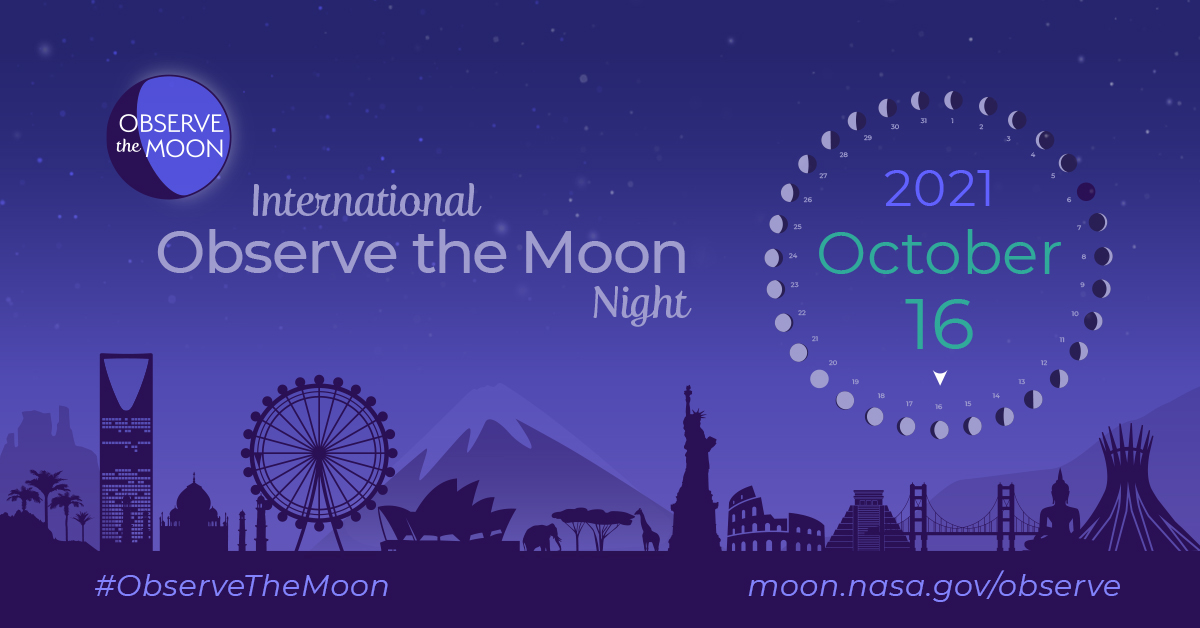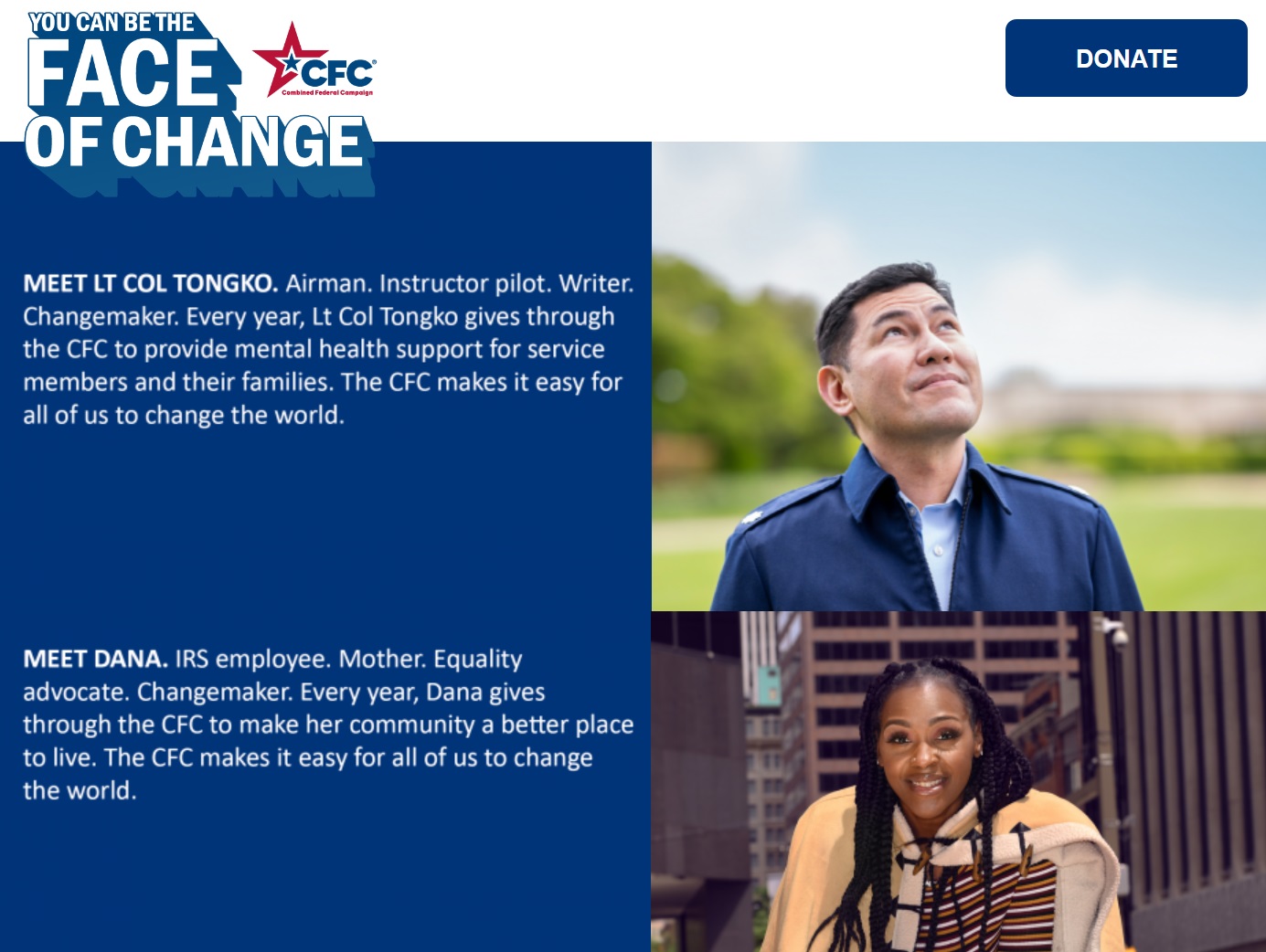Final Piece of Rocket Hardware Added to Artemis I Stack
The last piece of Space Launch System rocket hardware has been added to the stack at NASA’s Kennedy Space Center. Crews with NASA’s Exploration Ground Systems and contractor Jacobs added the Orion stage adapter to the top of the rocket inside the spaceport’s Vehicle Assembly Building. To complete the Artemis I stack, crews will soon add the Orion spacecraft and its launch abort system on top of Orion stage adapter.
The Orion stage adapter, built at NASA’s Marshall Space Flight Center, connects Orion to the Interim Cryogenic Propulsion Stage, which was built by Boeing and United Launch Alliance at ULA’s factory in Decatur, Alabama. During the mission, the Interim Cryogenic Propulsion Stage will fire one RL10 engine in a maneuver called trans-lunar injection to send Orion speeding toward the Moon.
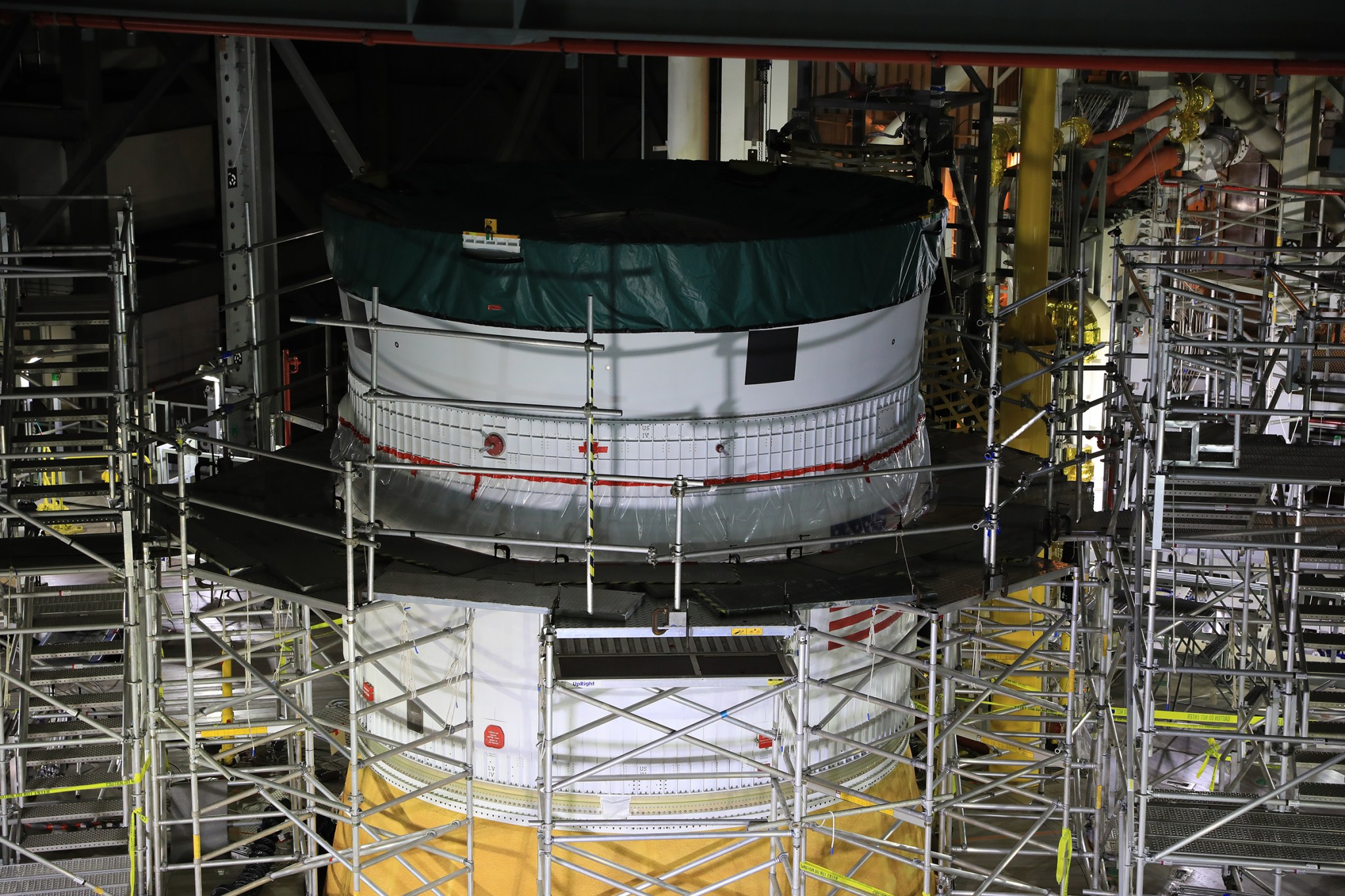
As Orion heads to the Moon for its mission, the Interim Cryogenic Propulsion Stage will separate from Orion and then deploy 10 secondary payloads that are riding to space inside the Orion stage adapter. These CubeSats have their own propulsion systems that will take them on missions to the Moon and other destinations in deep space.
While the Interim Cryogenic Propulsion Stage and Orion stage adapter are making it possible for SLS to send its first science payloads to space on this uncrewed mission, they only will be used for the first three Artemis missions. The Exploration Upper Stage, a more powerful stage with four RL10 engines, will be used on future Artemis missions. The Exploration Upper Stage can send 83,000 pounds to the Moon, which is 40% more weight than the Interim Cryogenic Propulsion Stage. The Exploration Upper Stage makes it possible to send Orion, astronauts, and larger and heavier co-manifested payloads to the Moon.
Artemis I will be followed by a series of increasingly complex missions. With Artemis, NASA will land the first woman and the first person of color on the lunar surface and establish long-term exploration at the Moon in preparation for human missions to Mars. SLS and Orion, along with the commercial human landing system and the Gateway in orbit around the Moon, are NASA’s backbone for deep space exploration. SLS is the only rocket that can send Orion, astronauts, and supplies to the Moon in a single mission.
We Love Lucy: Four Questions with Mission Manager Sherry Jennings
By Amanda M. Adams
NASA is preparing to launch a new spacecraft on a quest to unlock the mysteries of the solar system’s formation. Named for the fossilized skeleton of one of the oldest known human ancestors, Lucy will be the first mission to study the Trojan asteroids associated with, but not close to, Jupiter. Lucy is scheduled to launch no earlier than Oct. 16 on a United Launch Alliance Atlas V 401 rocket from Space Launch Complex-41 on Cape Canaveral Space Force Station in Florida.
Just as the mission’s namesake provided insight into humanity’s evolution, the Lucy mission could revolutionize knowledge of planetary origins and the formation of the solar system. During its 12-year journey, Lucy will visit a record-breaking eight different asteroids – a main belt asteroid and seven Trojans that are believed to be remnants from the formation of the outer planets.
Sherry Jennings, mission manager at NASA’s Marshall Space Flight Center for Lucy, sat down with us to answer several questions about the mission.
Question: What’s the most exciting thing about the Lucy mission to you?
Jennings: Trojan asteroids have witnessed first-hand the history of the outer solar system. Thus, they present us with a unique opportunity to better understand planet formation and solar system evolution. These primitive bodies hold vital clues to deciphering the history of the solar system.
Question: What are the science instruments on the spacecraft and what data do we expect?
Jennings: Lucy hosts three scientific instruments that will gather data to help scientists unlock the mysteries of planet and solar system formation.
Lucy Thermal Emissions Spectrometer is a version of which is currently flying on the OSIRIS-REx mission, will study the thermal environment of the Trojan surfaces, resulting in a better understanding of the physical properties of the regolith, such as grain sizes and subsurface layering.
L’Ralph is similar to instruments currently flying on the New Horizons and OSIRIS-REX missions, is the combination of a Multi-spectral Visible Camera and an infrared imaging spectrometer use to look for ice and organics and will be determining the mineral makeup of the asteroids.
The Long Range Reconnaissance Imager will provide detailed images of the surface of the Trojans. It is a clone of the New Horizons instrument which was used to capture the iconic images of the New Horizons Pluto flyby and should produce images of the Trojans that will help scientists in understanding the geological features and crater counts – aiding with determining the age of the Trojans.
Question: What is your favorite thing about your job and working this mission?
Jennings: I’m responsible for making sure the project team has the resources they need to be successful. Having the privilege of being a part of a team that hopes to produce scientific discoveries that change or improve our understanding of the evolution of our solar system inspires me.
I am grateful to have worked on such an ambitious mission with a team of talented people from across this country. This team has persevered and maintained a “can do” attitude through challenges of integrating and testing hardware during a global pandemic, along with numerous and significant technical challenges. It will be bittersweet when Lucy launches. I will miss working with this team, but I am very excited to see the amazing discoveries that result from the Lucy mission.
Question: What does the Planetary Missions Program Office at Marshall do? How does this help missions like Lucy?
Jennings: Our office manages the Discovery, New Frontiers, and Solar System Exploration programs with missions that explore the inner planets, outer planets, the Moon, asteroids, comets, and even targets beyond our solar system. We recently added lunar instruments that fly on the Commercial Lunar Payload Services landers to our portfolio. Our goal is to enhance the probability of mission success of by providing technical oversight as well as specialized support as needed.
We are a fast-paced organization and the development of our projects from the preliminary design review to launch averages only 39 months. Lucy is the first of three launches for our office in less than a year.
For Lucy, we have worked together with the project team every step of the way through development ensuring availability of any additional resources required to maneuver due to the pandemic.
Lucy is a Discovery Program mission managed by the Planetary Missions Program Office for NASA’s Planetary Science Division. The mission is led by the principal investigator from the Boulder, Colorado, office of the Southwest Research Institute. NASA Goddard Space Flight Center is the primary NASA center for Lucy, providing overall project management, systems engineering, and safety and mission assurance. Lockheed Martin Space in Denver built the spacecraft. KinetX in Simi Valley, California, provides mission navigation. Launch operations will be conducted by NASA’s Kennedy Space Center.
Adams, an LSINC employee, supports Marshall’s Office of Strategic Analysis & Communications.
Next-Generation Air Filtration Hardware Built at Marshall, Activated on Space Station
By Rick Smith
Advanced air filtration hardware developed, built, and tested at NASA’s Marshall Space Flight Center is now installed and working on the International Space Station.
For the next year, the new 4-Bed Carbon Dioxide Scrubber will augment existing elements of the station’s Environmental Control and Life Support Systems, demonstrating next-generation life support system capabilities that could help future explorers on the Moon and Mars breathe easier.
“The Marshall team has supported scientific discovery – and crew health – on the International Space Station for 20 years,” said Joseph Pelfrey, manager of Marshall’s Human Exploration Development & Operations Office. “With the delivery of the new carbon dioxide scrubber, we are using our expertise to expand the bounds of human exploration.”
The new hardware was delivered to the station by the Cygnus spacecraft Aug. 10, part of Northrop Grumman’s 16th commercial resupply services mission.
The scrubber hardware will help recycle and regenerate most of the air and water necessary to sustain the station crew, using commercial adsorbent materials to retain water vapor while filtering carbon dioxide out of the station’s airflow. It also will help steer development of future regenerative technology solutions for Artemis missions to the Moon and eventual human excursions to Mars.
The 4-Bed Carbon Dioxide Scrubber is a design iteration of the current Carbon Dioxide Removal Assembly, which has been recycling air on the space station since 2001. The latest upgrades, incorporating numerous changes to improve durability and maintainability, are crucial to future crewed missions beyond Earth orbit.
Once its year of technology demonstration ends and its capabilities are proven, the new hardware will be integrated into the space station’s closed-loop recycling system for a minimum of three years to further demonstrate its viability for long-duration exploration missions and to contribute to station crew life support capabilities.
As many as 100 Marshall engineers, materials researchers, and safety personnel, plus sensor, filtration, and pump hardware specialists at NASA’s Johnson Space Center, had a hand in the design, fabrication, and testing of the new hardware unit, said Donnie McCaghren, project manager for the 4-bed CO2 scrubber at Marshall.
“Our primary goal was increasing efficiency and maintainability, to ensure fully functioning, longer-lasting hardware in orbit with less need for crew maintenance,” he said.
The new hardware is roughly the size of a small refrigerator and weighs approximately 450 pounds. Its operation is overseen in orbit by mission controllers at Johnson, with continuing contributions by Marshall space station hardware engineers.
Smith, a Manufacturing Technical Solutions employee, supports Marshall’s Office of Strategic Analysis & Communications.
Teams Selected for NASA’s 2022 Human Exploration Rover Challenge
By Wayne Smith
Ingenuity and inspiration drive NASA’s Human Exploration Rover Challenge.
And there’s some fun involved, too.
NASA wants to inspire the next generation of astronauts with its Human Exploration Rover Challenge (HERC), which invites high school and university students from across the world to participate.
The agency also hopes HERC competitors provide inspiration for space exploration in using their own ingenuity to design and build rovers for the 28th annual event, which will be held at the U.S. Space & Rocket Center on April 28-30.
On Oct. 7, NASA announced the 91 U.S. and international teams that will compete in the 2022 event. HERC, managed by the Southeast Regional Office of STEM Engagement at NASA’s Marshall Space Flight Center, encourages students to build upon Apollo missions while using the goals of the Artemis program to pilot human-powered rovers over a challenging half-mile course simulating the terrain of the Moon, Mars, and other rocky bodies in our solar system.
“We congratulate each of the teams selected to compete in HERC 2022,” said Miranda Fike, senior education specialist at Marshall. “Everyone involved with the challenge looks forward to seeing the remarkably creative designs and strategies teams develop each year.”
This year’s grueling course comprises 12 challenges and five tasks. Two drivers from each participating school must complete the challenge in eight minutes. They must also think like mission planners, selecting tasks to complete along the path to gain the maximum amount of points available. This encourages teams to develop strategies that balance efficiency with speed to simulate real-world conditions astronauts would face in completing their space mission.
HERC organizers reduced the number of course obstacles from 14 to 12 to give teams more time to focus on the five unique mission tasks, which includes collecting samples, taking photographs, or conducting other simulated science objectives.
The primary objective of HERC is for teams of students to design, develop, build, and test human-powered rovers capable of traversing challenging terrain and task tools for completion of various mission tasks. Teams must also meet size and weight requirements to ensure their rovers would fit into a lander storage area.
Teams earn points throughout the process with successful completion of design reviews as they develop and assemble a rover that meets all challenge criteria and accomplishing course obstacles and mission tasks. Winning teams – high school and college/university – are those that accumulate the highest number of points throughout the project year in each category.
“Our goal is to make real-world connections between student ingenuity and the vital work NASA is doing right now to return explorers to the Moon and prepare the way for crewed missions to Mars,” said education specialist Catherine Shelton of the Office of STEM Engagement at Marshall.
In the event the ongoing COVID-19 pandemic forces modifications to the competition – including changes to planned in-person activities – competitors and audiences will be notified.
HERC reflects the goals of the Artemis program, which seeks to put the first woman and person of color on the Moon. It is one of the seven Artemis Student Challenges. NASA’s Office of STEM Engagement uses to further the agency’s goal of encouraging students to pursue degrees and careers in the science, technology, engineering, and mathematics fields.
Smith, a Media Fusion employee, supports Marshall’s Office of Strategic Analysis & Communications.
NASA Announces 60 Teams for 2022 Student Launch Competition
NASA has announced the 60 teams from 22 states and Puerto Rico selected to compete in the 2022 Student Launch — one of seven Artemis Student Challenges.
The nine-month challenge, managed by NASA’s Southeast Regional Office of STEM Engagement and held at Marshall Space Flight Center, provides a realistic experience for middle school, high school, and college students to follow the engineering design process NASA and industry engineers use when developing and operating new hardware.
The student teams are required to design, build, test, and fly a payload and high-powered amateur rocket to an altitude between 3,500 and 5,500 feet. Teams also must meet multiple documentation and presentation milestones with NASA experts as they develop their rocket. The reports often total hundreds of pages of work by the end of the competition year.
Teams in the college/university division will tackle a new task that mirrors NASA missions like the Mars Curiosity Rover. Teams must design a payload capable of autonomously locating where their rocket landed by identifying the rocket’s grid position on an aerial image of the launch site, while transmitting the data back to their ground station. This must be accomplished without the use of GPS. The requirement simulates a challenge faced by NASA mission managers – communicating with spacecraft and payloads on distant planetary bodies, where use of GPS is not an option.
Middle and high school teams can choose to attempt the college/university division challenge or develop their own science or engineering experiment.
Due to the COVID-19 pandemic, teams will have the option of coming to Huntsville in April to complete the project or they can finish the entire project virtually – either by conducting their final flight at a local National Association of Rocketry- or Tripoli Rocketry Association-sanctioned launch, or by competing in the Design Division. Both options are outlined in the Student Launch handbook.
Teams will continue to “call their shot” by predicting, months in advance of their competition flight, their rocket’s ultimate altitude. When teams submit their preliminary design review package to NASA in November, they will submit their predictions and target altitudes for their competition launch.
Teams also are scored in nearly a dozen other categories, including safety, vehicle design, social media presence, and science, technology, engineering, and mathematics engagement. The STEM Engagement Award encourages and recognizes teams for sharing their knowledge and experiences with the next generation of engineers, scientists, and explorers.
The Southeast Regional Office of STEM Engagement manages Student Launch to stimulate innovation and advance NASA’s human exploration mission through collaboration with educational institutions and students – the Artemis Generation, who will help NASA explore the Moon and Mars.
NASA’s Office of STEM Engagement furthers the agency’s goal of encouraging students to pursue degrees and careers in the STEM fields through multiple challenges, including Student Launch. NASA’s Space Operations and Exploration Systems Development mission directorates and the Office of STEM Engagement, along with Northrop Grumman and the Huntsville chapter of the National Space Club, provide funding and leadership for the initiative. Many of the NASA and industry leaders advising the teams have an in-depth understanding of rocketry challenges because they work on the agency’s Space Launch System rocket that will send astronauts to the Moon. The SLS Program is managed by Marshall.
Hispanic Heritage Month: Marshall Interns Crystal Otero Vélez, Manny Gomez
By Janet Sudnik
NASA’s Marshall Space Flight Center gets an influx of bright new talent every semester, as NASA’s internship programs add to the workforce. Every new intern class introduces a group of new minds with fresh approaches and diverse thought. Each experience is unique, and both the students and the organizations they support learn from each other. At Marshall, they have the opportunity to work in nearly every discipline and get the experience and exposure they need to pursue their career goals.
In celebration of Hispanic Heritage Month, NASA is highlighting the importance of the culture, traditions, and contributions of its workforce – including its interns – whose roots are from Spain, Mexico, the Caribbean and Central and parts of South America. Meet two Marshall student interns who spent their summer contributing to the center’s missions.
Crystal Otero Vélez
School: University of Puerto Rico – Río Piedras campus
Major: Chemistry (graduate level)
My work at NASA: Supported development of an electrolytic oxygen recovery system for advanced life support. During this internship, I contributed on the selection of novel and effective electrolyte candidates for the system. I also learned about possible mechanistic explanations for the electrochemical reaction processes occurring inside the system.
Advice for future interns? It is a little overwhelming to start learning all the science behind the awesome projects that NASA is developing, but keep in mind that is a learning process and your mentor will be with you step by step, available for any doubts that you have.
Future goals? My future plans include following a post-doctorate degree and to be able to conduct diverse research related to NASA missions.
Why is it important that NASA celebrates Hispanic Heritage Month? Because it highlights some of the numerous contributions made by Hispanics. It also motivates the next generations to continue doing great things while representing our heritage.
Manny Gomez
School: University of Illinois at Chicago
Major: Electrical engineering
My work at NASA: Supported systems engineering organization, modeling quantum computing systems using systems modeling language.
Advice for future interns? Be an advocate for yourself!
Future goals? To continue to move quantum computing from a theoretical concept to a real-world technology.
Why is important that NASA celebrates Hispanic Heritage Month? Representation matters!
NASA internships leverage NASA’s unique missions and programs to enhance and increase the capability, diversity, and size of the nation’s future science, technology, engineering, and mathematics workforce. Internships are available from high school to graduate level. Internships provide students with the opportunity to participate in either research or other experiential learning, under the guidance of a mentor at NASA. Learn more about internship opportunities at Marshall and other NASA centers here.
Sudnik is a public affairs officer in Marshall’s Office of Strategic Analysis & Communications.
NASA to Celebrate International Observe the Moon Night
NASA’s Planetary Missions Program Office, located at the agency’s Marshall Space Flight Center, will celebrate International Observe the Moon Night with a virtual observation party Oct. 16 from 6-7:15 p.m. David Weigel, director of the Intuitive Planetarium at the U.S. Space & Rocket Center, will host the event, which will be streamed on YouTube and include planetarium views of the Moon and interviews with planetary and citizen scientists. Join the Facebook event page here to learn more and participate in the activities leading up to the event. The YouTube link will be provided a few days before the party on the Facebook event page. (NASA)
Marshall Kicks Off 2021 Combined Federal Campaign Fundraiser
By Rick Smith
On Oct. 18, NASA’s Marshall Space Flight Center will formally join federal installations and agencies across the country in launching the 2021 Combined Federal Campaign. The annual goodwill drive supports charitable and nonprofit organizations at the local, regional, and national levels.
Team members can visit Inside Marshall on Oct. 18 to watch a CFC kickoff video from Marshall Associate Director Steve Miley, who will outline the goals for the 2021 campaign. This year’s theme is “You Can Be the Face of Change.”
Team members wishing to donate can use the U.S. Office of Personnel Management’s centralized donation platform website. Payroll deduction pledges also can be made on the platform. The site will identify “Causes of the Week” throughout the campaign, with special emphasis on different types of charitable giving, and will share stories of real federal employees, retirees, and others who have benefited from CFC support in years past.
Due to ongoing COVID-19 restrictions, the campaign remains an exclusively virtual effort this year – but Marshall campaign coordinator Lindsey Ingram said she’s optimistic about the Marshall team’s response.
“The Combined Federal Campaign has been a successful team endeavor at Marshall for years,” Ingram said. “It was difficult last year, in the midst of the pandemic, to work the campaign into the mix, when everyone was still reinventing their workflows and working to meet program goals and mission deadlines. This year, we’re all eager for a return to more normalized operations, and to reconnect with coworkers and officemates. We hope that will also translate into a successful, unified fundraising effort for CFC.”
In 2020 alone, the campaign raised more than $81.5 million for charities around the nation. Since its inception 60 years ago, the campaign has raised more than $8.5 billion to support homeless shelters, feed families in need, provide assistance for disabled persons, rescue abandoned or neglected animals, seek cures for diseases, and aid military veterans.
The 2021 campaign is scheduled to run through Jan. 15, 2022.
Smith, a Manufacturing Technical Solutions employee, supports Marshall’s Office of Strategic Analysis & Communications.
Lucy Time Capsule Highlighted on ‘This Week @ NASA’
The opportunity to create a personal Lucy time capsule is featured in “This Week @NASA,” a weekly video program broadcast on NASA-TV and posted online.
The team for NASA’s Lucy mission invites the public to create their very own time capsule for the mission and share it online using the hashtag #LucyTimeCapsule. The plan is to revisit your time capsule at future mission milestones, for personal reflection and/or to add new items. The Lucy spacecraft will carry a time capsule that includes a plaque inscribed with words of wisdom on its 12-year odyssey to several asteroids, including the never-before-explored Trojan asteroids that share an orbit with Jupiter. Lucy is targeted for launch no earlier than Oct. 16.
Lucy is a project of the Science Mission Directorate’s Discovery Program, managed by the Planetary Missions Program Office at NASA’s Marshall Space Flight Center.
View this and previous episodes at “This Week @NASA” on NASA’s YouTube page.







